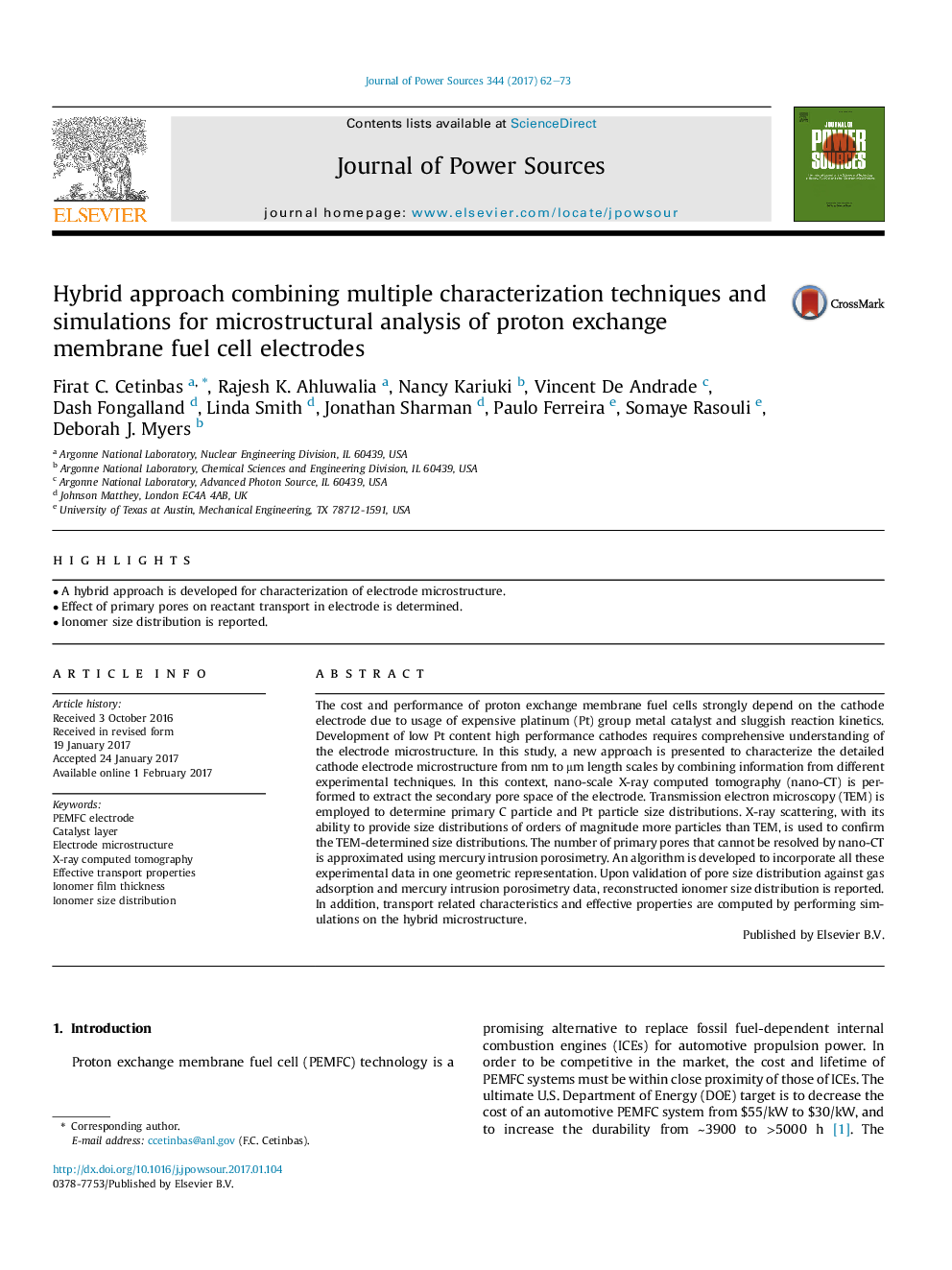| Article ID | Journal | Published Year | Pages | File Type |
|---|---|---|---|---|
| 5149812 | Journal of Power Sources | 2017 | 12 Pages |
Abstract
The cost and performance of proton exchange membrane fuel cells strongly depend on the cathode electrode due to usage of expensive platinum (Pt) group metal catalyst and sluggish reaction kinetics. Development of low Pt content high performance cathodes requires comprehensive understanding of the electrode microstructure. In this study, a new approach is presented to characterize the detailed cathode electrode microstructure from nm to μm length scales by combining information from different experimental techniques. In this context, nano-scale X-ray computed tomography (nano-CT) is performed to extract the secondary pore space of the electrode. Transmission electron microscopy (TEM) is employed to determine primary C particle and Pt particle size distributions. X-ray scattering, with its ability to provide size distributions of orders of magnitude more particles than TEM, is used to confirm the TEM-determined size distributions. The number of primary pores that cannot be resolved by nano-CT is approximated using mercury intrusion porosimetry. An algorithm is developed to incorporate all these experimental data in one geometric representation. Upon validation of pore size distribution against gas adsorption and mercury intrusion porosimetry data, reconstructed ionomer size distribution is reported. In addition, transport related characteristics and effective properties are computed by performing simulations on the hybrid microstructure.
Keywords
Related Topics
Physical Sciences and Engineering
Chemistry
Electrochemistry
Authors
Firat C. Cetinbas, Rajesh K. Ahluwalia, Nancy Kariuki, Vincent De Andrade, Dash Fongalland, Linda Smith, Jonathan Sharman, Paulo Ferreira, Somaye Rasouli, Deborah J. Myers,
